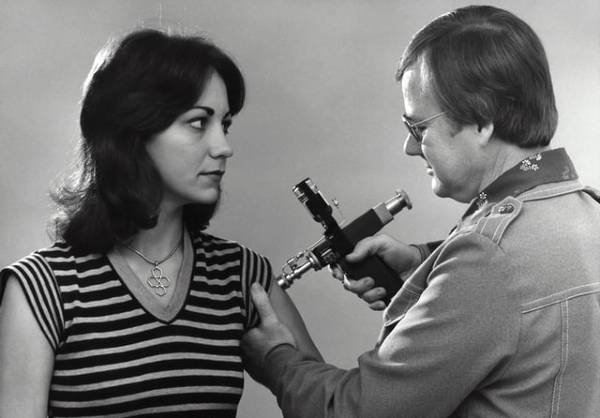There has been a lot of talk surrounding vaccinations in the past few years, especially during the COVID-19 pandemic. With many boasting selfies with their filled-out vaccination cards and proudly bearing side-effects, and new medications being developed in record time, it is easy to forget that inoculation has been a prominent discussion for thousands of years. The vaccination process has obviously come a long way, so let’s take a moment to stroll back in time, through the history of vaccinations.
Early Inoculation
Though the exact date is unknown due to varying reports, some sources claim that inoculation started as early as 200 BCE in China. Most reports of these early inoculations, however, come from 14th and 15th century China, in which smallpox scabs would either be ground to a powder and snorted up the nose or matter from within smallpox sores would be rubbed into deep scratches made in the skin.
Moving Forward
By 1796, Edward Jenner had begun testing a similar process in Europe. Jenner studied arm-to-arm inoculation, which consisted of taking one blister from one individual infected with cowpox and implanting it in the skin of another. Those undergoing early forms of arm-to-arm inoculation could expect three weeks of devastating side-effects. However trying, though, these weeks of fever, chills, and expelling bodily fluids of all sorts were, they were seen as a welcome alternative to death by smallpox.
This process largely remained the height of vaccination progress until the late 1840s, when general scientific knowledge had advanced enough to accommodate large-scale vaccine production. After the founding of the smallpox vaccine, scientists around the globe rapidly began finding new solutions to long-standing illnesses.
Modern-day Vaccines
Most traditional vaccines still mimic this arm-to-arm inoculation process, on a less grotesque level. By injecting the body with either a weakened form of a disease or an imitation disease, the body’s immune system and natural defenses kick in and learn how to effectively attack these foreign particles. Then, when the real deal enters the body, the immune system already knows how to identify and attack the disease and can better fight it off.
The newest vaccine, which helps fight against COVID-19, is the first of its kind: an mRNA vaccine. While the Johnson & Johnson vaccine follows traditional methods, both the Moderna and Pfizer vaccinations teach the body’s defenses to create, recognize, and destroy a replica of the protein found on COVID-19 molecules’ spikes. Many scientists believe that we will begin to see more of these revolutionary mRNA vaccines in the future.
Vaccine Discovery Dates Throughout the History of Vaccinations:
1796 – Cowpox
1880 – Cholera
1885 – Rabies
1897 – Bubonic Plague
1899 – Typhoid
1911 – Cholera
1914 – Diphtheria
1921 – Tuberculosis
1924 – Tetanus
1924 – Scarlet Fever
1926 – Pertussis (Whooping Cough)
1932 – Yellow Fever
1937 – Typhus
1937 – Influenza (Flu)
1954 – Anthrax
1955 – Polio
1963 – Measles
1967 – Mumps
1969 – Rubella
1977 – Pneumonia
1978 – Meningitis
1981 – Hepatitis B
1984 – Chicken Pox
1989 – Q Fever
1990 – Hantavirus Hemorrhagic Fever with Renal Syndrome
1991 – Hepatitis A
1998 – Lyme Disease
1998 – Rotavirus
2006 – Human Papillomavirus (HPV)
2012 – Hepatitis E
2015 – Enterovirus 71
2015 – Malaria
2019 – Ebola
2020 – COVID-19
Agents
We hope this information on the history of vaccinations is helpful to you.
Empower Brokerage is dedicated to helping you educate your clients on the insurance they need and staying on top of their health. Whether it’s through webinar training, one-on-one calls, seminars, or marketing plans. We want you to be successful. Give us a call if you have any questions 888-539-1633.
Quick Links:
Originally from the snow-capped Rockies, Macee moved to Texas in 2016 to pursue an undergraduate degree in Strategic Communication. She currently serves as a writer and editor for Empower Brokerage, as well as the marketing manager for Preferred Senior Advisors. Macee is also working on her Master’s degree in management, and hopes to inspire others with her passion for telling stories through varied digital and print marketing efforts.





